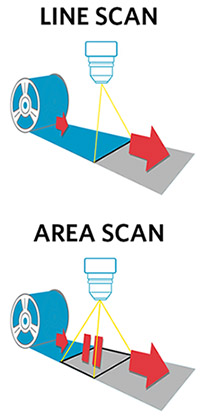Convert with Confidence
By Matt Anderson
Article from the newsletter “Inside NIRMA – Summer 2019”
Your microfilm archives are unique and contain priceless records that cannot be found anywhere else. This means converting your analog archives to digital records must be completed in a way that ensures that not only the images are readable but that all the information residing on the film has been captured completely and not accidentally omitted.
Not all microfilm scanners are created equal. You wouldn’t hammer a nail with a screwdriver? No more than you should convert an entire roll of microfilm on a scanner with an area image sensor. Discover the benefits of line scanning technology.
There are two possible ways of capture when deciding to scan microfilm, progressive line sensor scanning or stop, point and shoot area sensor scanning. The two ways were developed for two distinct purposes, continuous capture of a roll of microfilm or simple information retrieval. Line sensor scanning allows for the progressive, constant capture of an entire roll of microfilm in motion. The sensor spans the width of roll of microfilm, capturing each line of data as the film passes. It is the continuous line sensor scanning capability that allows for the edge-to-edge and end-to-end capture required to make a true digital duplication of the roll of microfilm. Area sensor scanning uses an image sensor similar to what you would find in a digital camera and operates similarly as it captures a single image, one at a time. To capture an entire roll the system is required to recognize an area to scan, stop, capture and continue. Area sensor scanning technology may not capture 100% of the media resulting in some information being omitted. For example, the system may not recognize each individual frame. It is important to remember that the original process of converting documents to microfilm was not perfect and many items are too dark, skewed, or were too close together. Any of these could result in a skipped image. Perhaps it’s nothing, what if was critical?
Ribbon Scanning
Over a decade ago, conversion bureaus urged the industry to develop a groundbreaking process that guaranteed 100% complete edge-to-edge and end-to-end capture of microfilm. Why? Their current process at the time of point, scan and capture was time consuming and didn’t always deliver a perfect conversion. The solution was line scanning technology delivering a digital image in one continuous ribbon. The reliable conversion process now resolved numerous scanning errors that had previously hindered earlier scanning efforts, including missed images.
Not only does Ribbon Scanning, with Line Scanning Technology, allow for complete capture it also enables a useful auditing process to verify that each frame is captured correctly. Specialized software indicates density differences between images to an operator. They can quickly distinguish if it is an image to save or one to skip. True Ribbon Scanning can only be accomplished using Line Scanning Technology and cannot be accomplished through use of an area scanner which does not capture all the data on the roll of microfilm. This simple auditing procedure is unique as all of the data collected is displayed. If it was on the film, it is on the Ribbon. Nothing skipped, nothing omitted, nothing missed.
Different microfilm scanners are designed for different tasks. If you decide to convert, don’t leave your archive to chance. Ensure your data archive is identical to your current archive. Convert with confidence using Line Scanning Technology.

